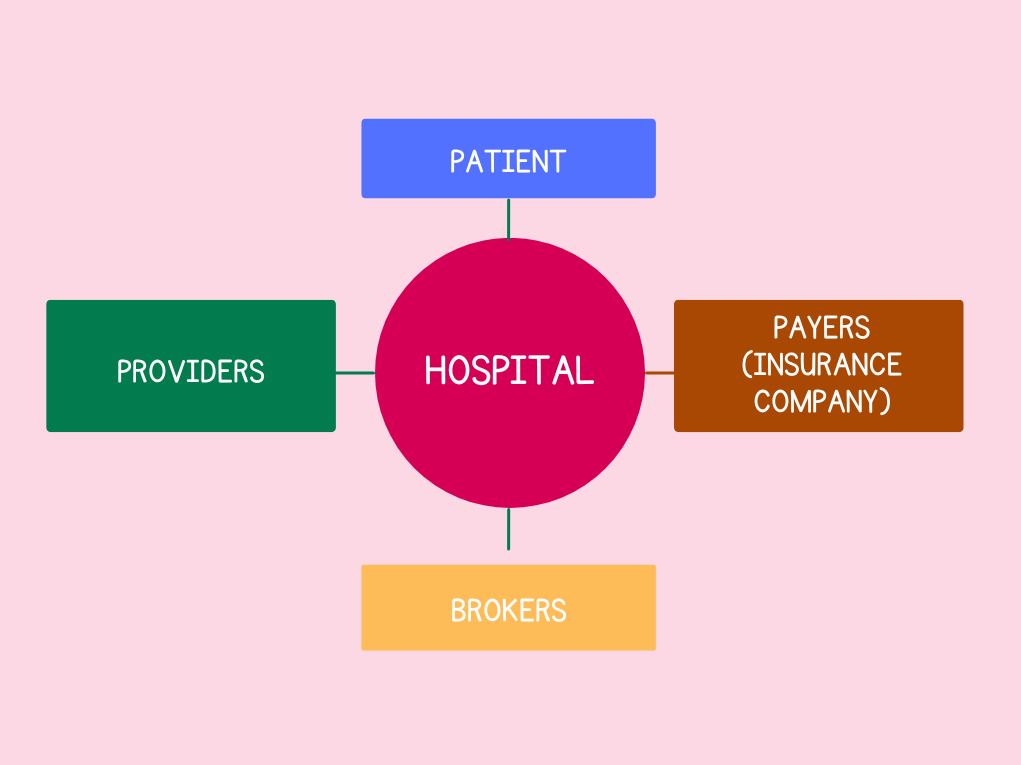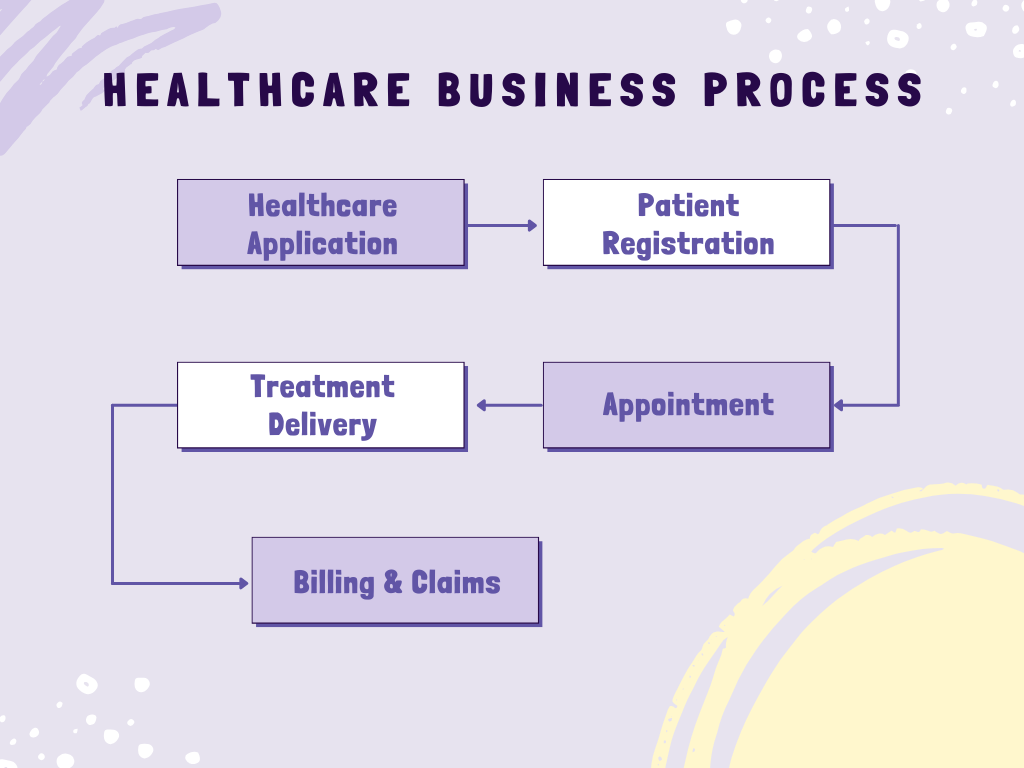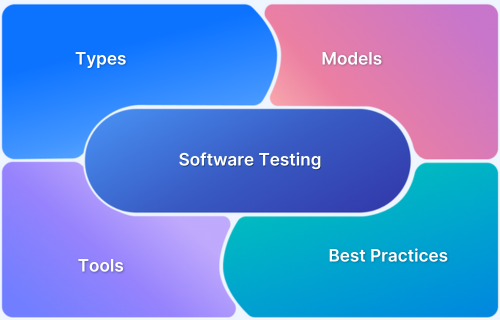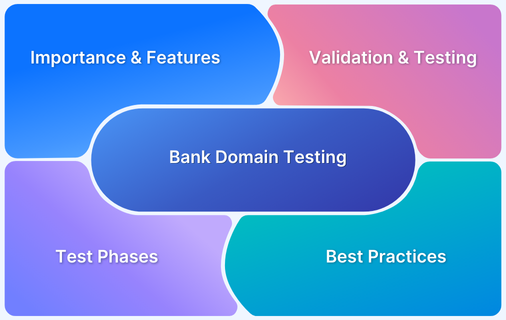HealthCare Domain Testing (With Sample Test Cases)
By Ayush Singh, Community Contributor - December 24, 2024
In the healthcare industry, accuracy, security, and compliance are non-negotiable. Healthcare applications should also abide by these three crucial factors.
This is where healthcare domain testing comes into play.
Healthcare domain testing is a specialized area of software testing that validates healthcare-related software apps. This ensures that the software aligns with industry standards and requirements.
From handling critical patient data to streamlining the workflows, healthcare domain testing makes sure that the system fulfills all the regulatory standards without compromising on user experience.
Learn in detail about healthcare domain testing, its importance, best practices and the different types along with strong examples with this guide.
- What is Healthcare Domain Testing?
- Healthcare Business Entities and Process
- Why is Healthcare Testing important?
- Types of Testing for Healthcare Applications
- Health Care Domain Testing: Workflow [with Examples of Test Cases]
- Why use BrowserStack for Healthcare Domain Testing?
- Advantages of Healthcare Domain Testing
- Challenges of Healthcare Domain Testing and Its Solutions
- Best Practices for Healthcare Domain Testing
- Frequently Asked Questions
What is Healthcare Domain Testing?
Healthcare domain testing refers to the systematic evaluation of healthcare software applications to verify that they comply with regulatory standards and fulfill user requirements.
Different aspects, such as functionality, data management, security, and administrative processes, such as billing and patient record management, are validated via healthcare domain testing.
Read More: Top 15 Test Data Management Tools
The primary goal of healthcare domain testing is to validate that software solutions are reliable, secure, and capable of enhancing patient care while aligning with legal and safety requirements. This involves not only technical testing but also a deep analysis of healthcare workflows and regulations.
Healthcare Business Entities and Process
There are multiple entities involved in finalizing the process of the healthcare mechanism, which is explained below.
Healthcare Domain Entities
The healthcare system comprises multiple entities that engage with one another within a complex network. Here are some of the key entities:
- Patients: They receive healthcare services.
- Providers: They are the healthcare organizations or professionals who provide healthcare related services.
- Payers: Insurance companies or government programs that finance healthcare services.
- Brokers: Intermediaries facilitating insurance coverage for patients.
Healthcare Business Process
Healthcare processes are often sophisticated and contain multiple steps to facilitate quality services. Here’s a look into the process:
- Patient Registration: Patient details are gathered and saved for record-keeping.
- Appointment Scheduling: Managing provider availability and scheduling patient appointments.
- Treatment Delivery: Medical services are provided according to the patients’ requirements.
- Billings and Claims Processing: Handling payments and insurance claims.
Why is Healthcare Testing important?
Healthcare testing is important for several reasons such as:
- Patient Safety: Ensures that the software apps function responsibly and do not compromise with patient health.
- Regulatory Compliance: Follows the laws like HIPAA, ensuring data protection.
- Data Accuracy: Validates the accuracy and relevance of patient records.
- Operational Efficiency: Improves the usability of applications for healthcare professionals.
- Risk Mitigation: Decreases the probability of software failures that could lead to expensive errors.
Read More: How to Perform Software Risk Assessment
Types of Testing for Healthcare Applications
Different kinds of testing are important to fulfill the unique but critical demands of the healthcare industry. This often includes sensitive patient details and sophisticated workflows.
Here are the main types of testing for healthcare applications:
1. Functionality Testing
This type of testing sees to it that every feature of the healthcare application works according to expectations. It evaluates end-to-end processes and makes sure that user engagement yields the intended outputs.
2. Data Accuracy Testing
This type of testing validates the accuracy and reliability of information. Even minor
discrepancies can cause significant consequences, so validating data integrity is important for patient safety and operational efficiency.
3. Security Testing
Security testing is all about protecting sensitive patient information from unauthorized access and breaches. For example, assessing encryption methods, vulnerability assessments, etc.
4. Compliance Testing
It verifies that the software meets legal and regulatory standards requirements, helping organizations to establish a reputation in the industry.
Read More: 508 Compliance Testing Tools
5. Device Integration Testing
The objective of device integration testing is to allow seamless data transfer between devices and applications by making sure that the integrations with medical devices work correctly.
Read More: What is System Integration Testing
6. Performance Testing
Performance testing evaluates how well a healthcare application performs under various conditions, including normal and peak loads. It ensures that the application remains stable and responsive during high traffic or unexpected situations.
Health Care Domain Testing: Workflow [with Examples of Test Cases]
The workflow follows various testing phases that validate the functionality and performance of systems used by healthcare providers, insurers, and patients.
This is required to maintain the integrity of sensitive patient information and facilitate a seamless flow of healthcare services.
1. Testing of Member System
Test Scenario and Test Case Examples: Member (Patient) System
| Test Scenario | Test Cases |
|---|---|
| 1. Member system | Validate the member registration process works smoothly. |
| 2. Positive flow system testing | Ensure members can view their health records without errors. |
| 3. Negative flow system testing | Check how the system responds to invalid member login attempts. |
2. Testing of Provider System
Test Scenario and Test Case Examples: Provider System
| Test Scenario | Test Cases |
|---|---|
| 1. Access to the provider system | Verify that authorized providers can log in successfully. |
| 2. Positive flow system testing | Ensure that a provider can access patient records without errors. |
| 3. Negative flow system testing | Attempt to access the system with invalid credentials and check for denial. |
| 4. System integration testing | Validate that the provider system integrates correctly with billing systems. |
| 5. Positive flow providers portal | Confirm that providers can submit treatment plans without issues. |
| 6. Negative flow providers portal | Check how the system handles incorrect data submissions from providers. |
3. Testing of Broker System
Test Scenario and Test Case Examples: Broker System
| Test Scenario | Test Cases |
|---|---|
| 1. Broker system | Ensure brokers can access their dashboards without issues. |
| 2. Positive flow system testing | Verify that brokers can retrieve insurance plans accurately. |
| 3. Negative flow system testing | Attempt to access restricted areas and confirm access is denied. |
4. Testing of Claims System
Test Scenario and Test Case Examples: Claims System
| Test Scenario | Test Cases |
|---|---|
| 1. Claims system | Confirm that claims can be submitted correctly through the application. |
| 2. Positive flow system testing | Check claim processing reflects accurate payment information. |
| 3. Negative flow system testing | Attempt to submit a claim with missing information and check for rejection. |
5. Testing of the Finance System
Test Scenario and Test Case Examples: Finance System
| Test Scenario | Test Cases |
|---|---|
| 1. Finance system | Ensure financial transactions are recorded accurately in the ledger. |
| 2. Positive flow system testing | Checks that correct account details are used during payment processing. |
| 3. Negative flow system testing | Check how the system handles incorrect payment information entries. |
6. Testing for Regulatory Compliance
Test Scenario and Test Case Examples: Regulatory Compliance
| Test Scenario | Test Cases |
|---|---|
| 1. User’s Authentication | Ensure that only authorized users are logging in to the application. |
| 2. Information disclosure | Ensure access to patient information is restricted based on user roles. |
| 3. Data transfer | Confirm that all data transfers are encrypted to ensure patient privacy protection. |
Why use BrowserStack for Healthcare Domain Testing?
By using BrowserStack for healthcare domain testing, you can leverage functionalities that will ensure the reliability, security, and compliance of your healthcare application with industry standards.
BrowserStack’s Automate allows teams to run extensive tests across 3500+ real devices, browsers, and OS combinations through its vast real-device cloud. Thus, you can ensure that your application functions consistently across all sorts of devices and browsers.
BrowserStack offers a robust platform for automating healthcare domain testing:
- Cross-Browser Compatibility: Test applications across various browsers like Chrome, Firefox, Safari, Opera etc. via cross browser testing.
- Automated Workflows: Make testing processes more streamlined, and reduce time and manual efforts.
- Real Device Testing: Access 3500+ real devices for accurate performance evaluation.
- Integration Capabilities: Integrate smoothly with CI/CD tools for continuous testing.
- Parallel Test Execution: Leverage parallel testing to run multiple tests concurrently and accelerate test execution.
Advantages of Healthcare Domain Testing
There are multiple benefits of healthcare domain testing, such as:
- Enhanced Software Quality: Improves overall reliability and performance of applications.
- Increased User Satisfaction: Ensures that end-users find the software intuitive and effective.
- Regulatory Assurance: Minimizes legal risks associated with non-compliance.
- Cost Efficiency: Reduces potential costs associated with post-deployment failures.
Challenges of Healthcare Domain Testing and Its Solutions
Here are the main challenges of healthcare domain testing and their solutions :
1. Challenge: Ensuring that healthcare applications comply with regulations like HIPAA, GDPR, etc., can be challenging. Non-compliance can lead to legal issues and penalties.
Solution: Incorporate compliance verification into the testing process and leverage tools for data encryption and monitoring compliance.
2. Challenge: A lot of interdependence with different entities can make the systems more complex.
Solution: Assign specialized teams with experience in healthcare workflows and regulations to track the interdependencies between entities and simplify the workflow.
3. Challenge: Managing sensitive data requires strict security measures.
Solution: Implement strong security protocols during the testing phases.
Best Practices for Healthcare Domain Testing
Here are the best practices for healthcare domain testing:
- Understand system functionality before developing test cases.
- Analyze the interdependencies and the related workflow to plan accordingly
- Prioritize data security throughout the testing process.
- Document all test results properly for future reference.
- Use automation testing tools to enhance efficiency in repetitive tasks.
- Prioritize non-functional requirements (NFR) testing from the very beginning of the process. Do not push it to the end.
Conclusion
Healthcare domain testing has become a crucial aspect of the healthcare sector as it ensures that its software solutions are reliable, secure, and compliant to industry regulations.
By implementing the best practices and leveraging advanced tools like BrowserStack Automate to improve the quality of tests, organizations can significantly improve their application quality while ensuring patient safety and regulatory compliance.
Frequently Asked Questions
1. What are the six domains of healthcare?
The six domains of healthcare include
- Clinical health services
- Health information systems
- Public health services
- Health financing,
- Governance
- Health workforce development
2. What is domain-specific testing?
Domain-specific testing refers to the evaluation process focused on meeting the unique requirements and standards of a particular industry or field, such as healthcare, finance, or education.






